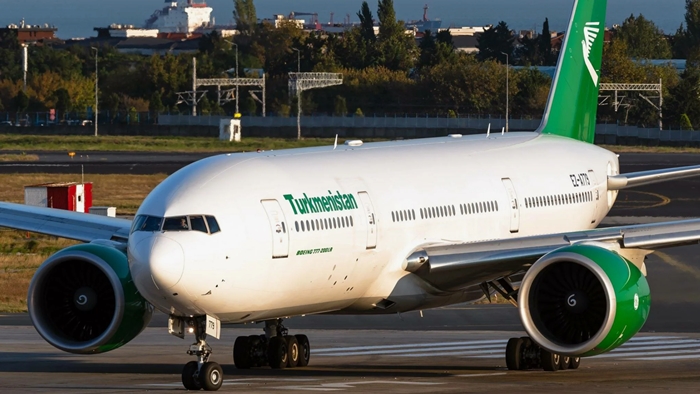Development of Air Cargo
The Central Asia, the Caspian region, and the Caucasus regions are witnessing a significant transformation in their air cargo sectors, driven by strategic investments, infrastructure enhancements, and international collaborations.
This rapid development is underscored by the bi-annual International Central Asia Aviation Summit, which in April 2024 brought together over 200 aviation professionals from around the world to Astana, the capital of Kazakhstan. The summit highlighted the growing importance of civil aviation in the region and received strong support from both government bodies and industry actors.
Delegates from Uzbekistan, Kazakhstan, Kyrgyzstan, Tajikistan, Armenia, Georgia, and Azerbaijan emphasized the region’s burgeoning aviation market, which has grown by 60% since 2017. The 6th Central Asia Aviation Summit is scheduled for September 12, 2024, in Tashkent, the capital of Uzbekistan.
Despite this growth, the Central Asian and Caucasus regions remain underpenetrated, with a large untapped flying population. While international connectivity is improving, the connections between Central Asian countries are still sub-optimal. Currently, 86% of the total airline capacity is allocated within Central Asia, with only 14% dedicated to other regions. Furthermore, 52% of this capacity is concentrated in the top 10 country pairs, indicating significant potential for expansion and optimization.
The overview below is based primarily on information published by CentralAsia+ Aero, one of the most comprehensive sources covering air transport in Central Asia and surrounding regions.
Key Factors Driving Growth
Economic and Political Stability
A favorable economic and political environment is a crucial driver of growth in the air cargo sector. Countries in Central Asia and the Caucasus are increasingly seen as stable and attractive destinations for investment, providing a solid foundation for the expansion of air cargo services.
Infrastructure Development
Significant investments in airport infrastructure are enhancing the region’s capacity to handle increased air cargo traffic. For example, Ashgabat Airport in Turkmenistan has been positioned as a major cargo and logistics hub, equipped with modern facilities and staffed by highly qualified personnel. Similarly, Tashkent International Airport in Uzbekistan is expanding its cargo complex, set to quadruple its capacity to 120,000 tons annually by 2025.
Fleet Expansion
Airlines across the region are expanding and modernizing their fleets to meet growing demand. Turkmenistan Airlines has introduced Airbus A330-200P2F freighters, while Silk Way West Airlines in Azerbaijan has bolstered its fleet with Boeing 777 Freighters and plans to add more advanced aircraft. My Freighter in Uzbekistan and AeroStan in Kyrgyzstan are also expanding their fleets with modern freighters, enhancing their operational capabilities.
Strategic Partnerships and International Collaborations
Collaborations with international aviation and logistics companies are crucial for the region’s air cargo development. Silk Way West Airlines, for instance, has signed a Memorandum of Understanding with China Henan Aviation Group to enhance connectivity between Zhengzhou and Baku. Such partnerships facilitate the efficient movement of goods and strengthen the region’s position in global trade networks.
Untapped Market Potential
Despite the rapid growth, the Central Asian and Caucasus regions still have a significant untapped market. The growing middle class and increasing e-commerce activities present substantial opportunities for air cargo services. As the region continues to develop economically, the demand for efficient and reliable cargo transportation is expected to rise, driving further growth in the sector.
Future Prospects
The future prospects for air cargo in Central Asia and the Caucasus are promising. The region is poised to become a major hub for international cargo transportation, leveraging its strategic location between Europe and Asia. Continued investments in infrastructure, fleet expansion, and strategic partnerships will be key to realizing this potential.
Enhancing Connectivity
Improving connectivity between Central Asian countries remains a priority. Enhanced intra-regional connections will facilitate smoother and more efficient cargo movements, reducing transit times and costs. This will also help to integrate the region more closely into the global supply chain.
Leveraging Geopolitical Shifts
Geopolitical changes and the evolving global trade landscape present both challenges and opportunities. By capitalizing on these shifts, the Central Asia and Caucasus regions can position themselves as vital transit points for global trade routes, particularly as they offer alternative pathways for cargo movements between East and West.
Sustainability and Technological Advancements
Investing in sustainable practices and technological advancements will be crucial for the long-term success of the air cargo sector. Airlines in the region are already adopting next-generation aircraft that offer improved fuel efficiency and reduced environmental impact. Continued focus on innovation and sustainability will ensure that the region remains competitive in the global air cargo market.
Soaring into the Future
The air cargo sectors in Central Asia and the Caucasus are on a trajectory of rapid growth and development. With strategic investments, expanding fleets, and international partnerships, these regions are set to become pivotal hubs in the global air cargo network. The favorable economic and political environment, coupled with untapped market potential, presents a bright future for air cargo in Central Asia and the Caucasus, driving economic growth and enhancing global connectivity. /// nCa, 13 August 2024 (cross post from aircargo.atocomm.eu) [to be continued]
